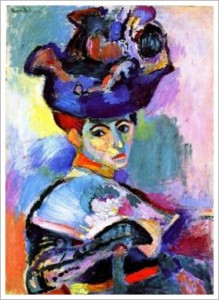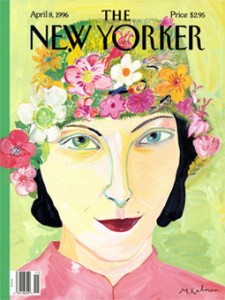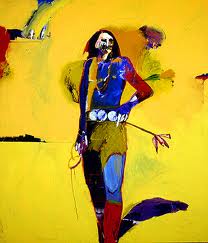Conversation overheard between two art lovers in the elevator at the Metropolitan Museum, New York City:
1st art lover: Did you see that fantastic fine art painting this week on the cover of “The New Yorker”?
2nd art lover: Man, that wasn’t a painting, that was an illustration!
1st art lover: So, what’s the difference?
2nd art lover: Try two things. PEOPLE AND MONEY! Half a million people see “The New Yorker” magazine covers weekly versus the much lower number of visitors who come to the Met to see the fine art.
1st art lover: And what about the money?
2nd art lover: Hey, artists never have any money. When they were young, Toulouse-Lautrec did posters, Renoir painted porcelain china and de Kooning was a sign painter. Gilbert Stuart, who did the famous portrait of George Washington on the US dollar bill, played the organ at weddings!
1st art lover: Can you believe it? Their brilliant fine art paintings wouldn’t pay the bills!
2nd art lover: Oh, and one last thing. Illustration can be first class, but it has no mystery; no need for guessing what it means, cause it spells out the story. Fine art only suggests the story and makes us ponder. We have to use our imagination.
1st art lover: Girl, I have one thing to say about all of that. WHOOO CARES?! Fine art vs Illustration. This is a debate that’s been going on since the discovery of the cave drawings.
Let’s just enjoy the art!
You decide. Is this fine art or illustration?
Send us a comment with your choice (select “Leave a Comment” below) and we’ll get back to ya!









The Met has 80,000 visitors weekly!
Artists & illustrators are both fine artiss!
This is a tough one. Pick and choose? Nah. I enjoy both. My call is that illustration such as Norman Rockwell is art. Some “art” does not have the quality of making one ponder, whatsoever. Conclusion? As said many times fold, “…it’s in ones eye.”
Right on, Vic! Norman Rockwell was by all accounts a great guy! He said, “I decided early on that if the world wasn’t an ideal one, it ought to be!” And he painted it as such, didn’t he?!
Job, now pay for the caves!
I would consider N.C. Wyeth as fine art, but have serious doubts about the Lichtenstein. On the other hand, I have seen what looks like “trash” as also considered “fine art.”
Someone needs to define the standard, in terms that the 99% can understand!
Sandy Bornstein
A standard…It sure would be nice, but I don’t think we’ll ever have one because of the multitude of opinions & sensibilities about art. Thx for comment! Kirby
I think both illustration and fine art have their merits and I enjoy both. But, fine art takes first place for me, as I like mystery and having to ponder.
I’m enjoying the discussion. One distinction that comes to mind is – illustration is a commissioned work, where the client decides the subject and probably the style too. Fine Art comes from the heart of the artist and is not necessarily intended for a specific buyer. I think both are art and both take tremendous skill.
Explanation 101:
Do you “love” it? Does it make your heart race(or more importantly the person who is looking at it) Are you willing to pay what they are asking?
If so then –guess what?–it is”fine” art to you and isn’t that all that really matters……
p.s. and guess what–you don’t have to explain it to anyone…..
Labels put on art are simply words which make it easier to verbalize about it. So, perhaps the question could be “Is this conversation about fine art and illustration a work of art in words?” Everyone do some illustration and some fine art and see what difference you experience.
Illustration and Fine Art both have a lot of merit and both take a lot of talent. I enjoy both.
This is a pointless question. “Fine” art is an artificial category. There is only “art,” and it takes myriad forms. Further, “art” is not a product, it’s a process, marked by the in-born, evolutionarily determined urge to “artify” or make the ordinary “special.” Human beings are never satisfied with the unaltered. Considerations of “quality,” skill, and so forth have no bearing on the question. See the works of Ellen Dissanayake for the complete story, in her works such as Homo Aestheticus: Where Art comes From and Why.
I couldn’t agree more with you and Ellen Dissanayake that us humans have the desire to make our everyday life, the things we see and do, special and unique.
Thanks for your insight, Ken!
Donna Turner was searching for a way to make a distinction when she said “Fine Art comes from the heart of the artist and is not necessarily intended for a specific buyer” but this one does not really fly. How about those thousands of works of “fine art” made specifically at the bequest of wealthy patrons (and the church) in the Renaissance and other eras?